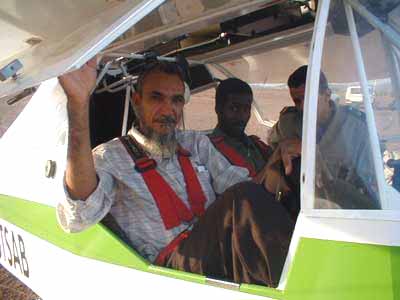The definition of a microlight aircraft varies from country to country, but the basic rule is that they are aircraft below a maximum specified weight (usually 500 kg maximum take off weight). There may also be additional criteria - for example a maximum wing loading and maximum stall speed.
In general there are two types of microlight aircraft - weight shift (or flexiwing) and three axis. Weight shift microlights are developed from hang gliders; there is a flexible wing and the pilot and passenger are seated in an open cockpit. The pilot controls the direction of the aircraft by means of a bar placed in front of him. The pilot moves the bar left or right (essentially shifting the weight underneath the wing) which causes it to turn.
A three axis microlight usually has rigid wings, and is configured much as a normal aircraft. The pilot controls the direction of flight by using a joystick or wheel and rudders, and the aircraft responds in the normal way to aileron, elevator and rudder movements.
The microlight under test was the Joker 300, a three axis microlight of conventional design. The aircraft was provided by the National Guard of Mauritania, who use it for aerial observation and search and rescue. The aircraft was based in Akjoujt for the testing programme. For more information on this aircraft see the distributors website.

The Joker 300 Taxiing in After an Evening Flight
Each participant undertook a short familiarisation flight in the aircraft, following which a day was spent in an object orientated planning session (moderated by Mohamed Abdallahi Ould Babah) in which the particpants drew up the specifications for an ideal aircraft for desert locust survey.

The Planning Workshop
The determination of how closely the microlight matched these specifications was the basis of the testing programme. All the particpants then flew in the aircraft to record data on visibility, performance and so on. Following each evening and morning series of flights the particpants discussed the results. A total of 20 flying hours was available for this work.

A Workshop Participant Preparing to Undertake a Test Flight
For views from the aircraft, click here.